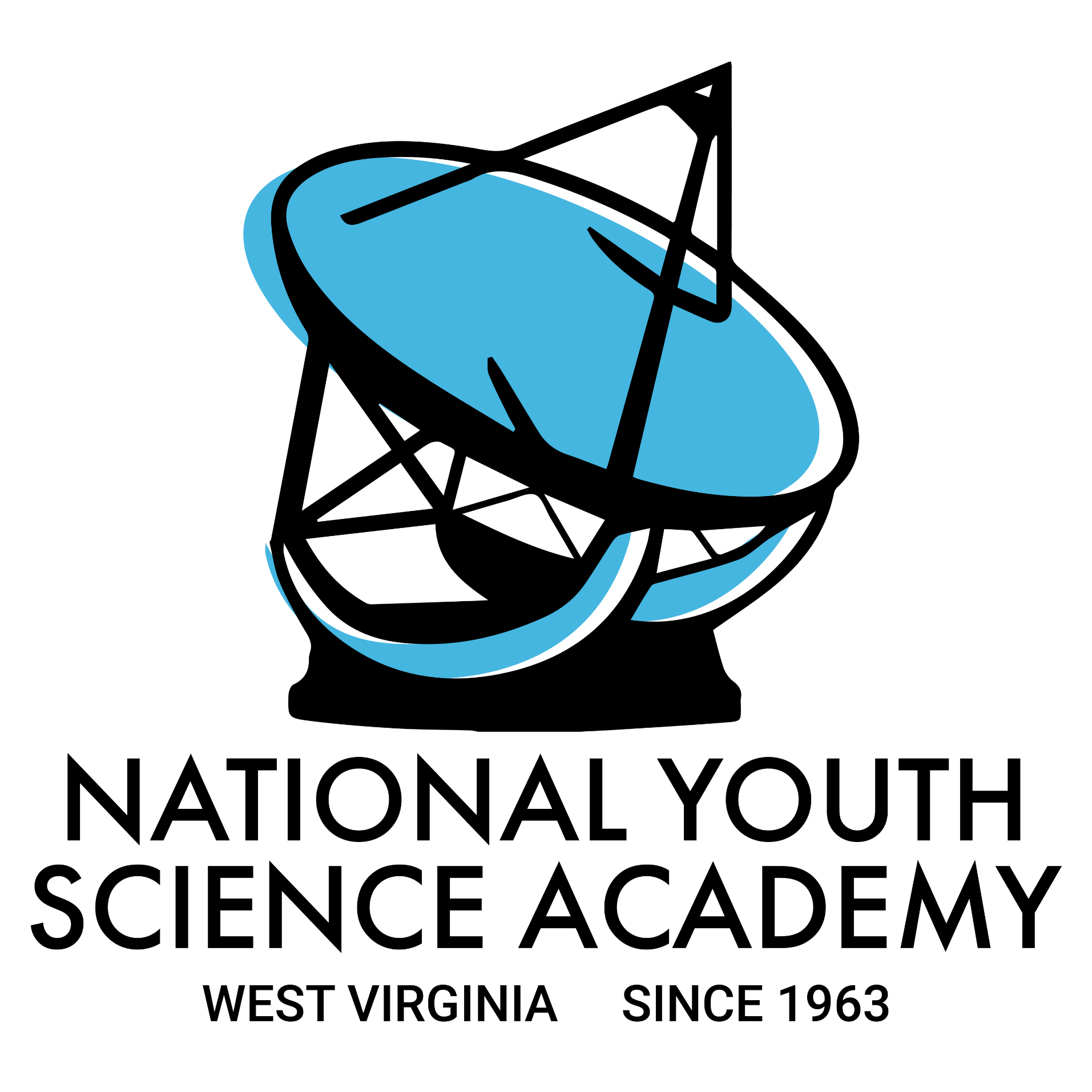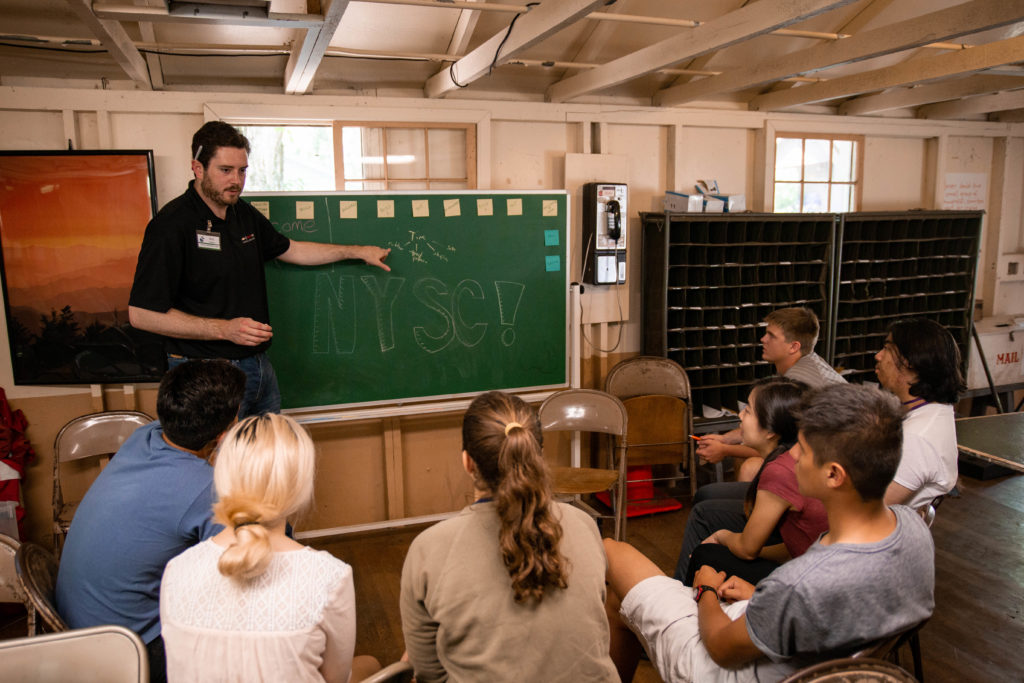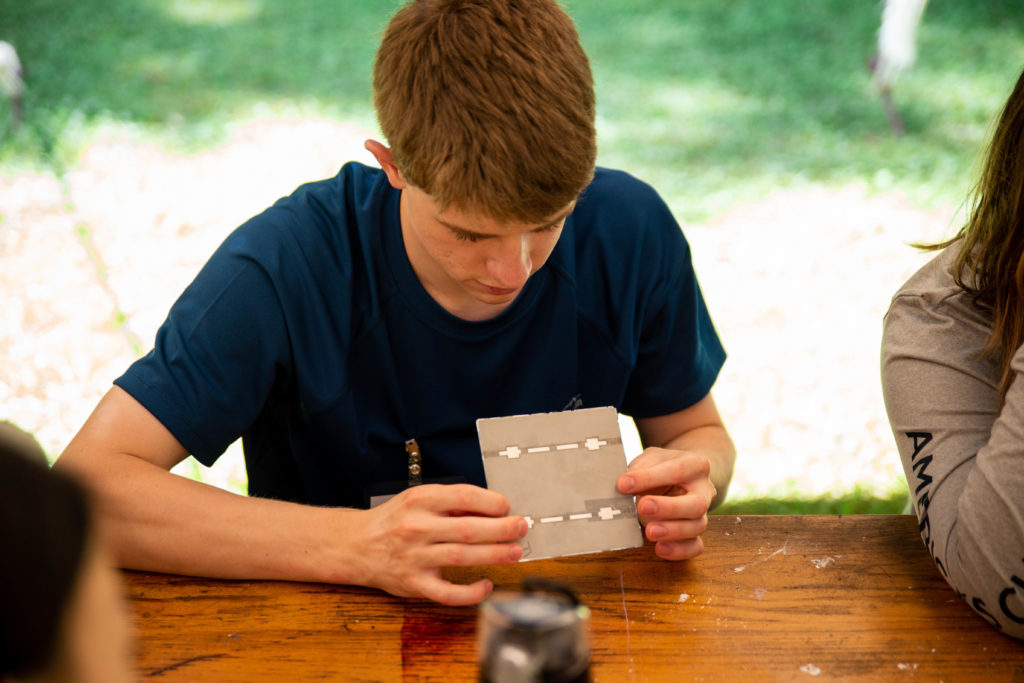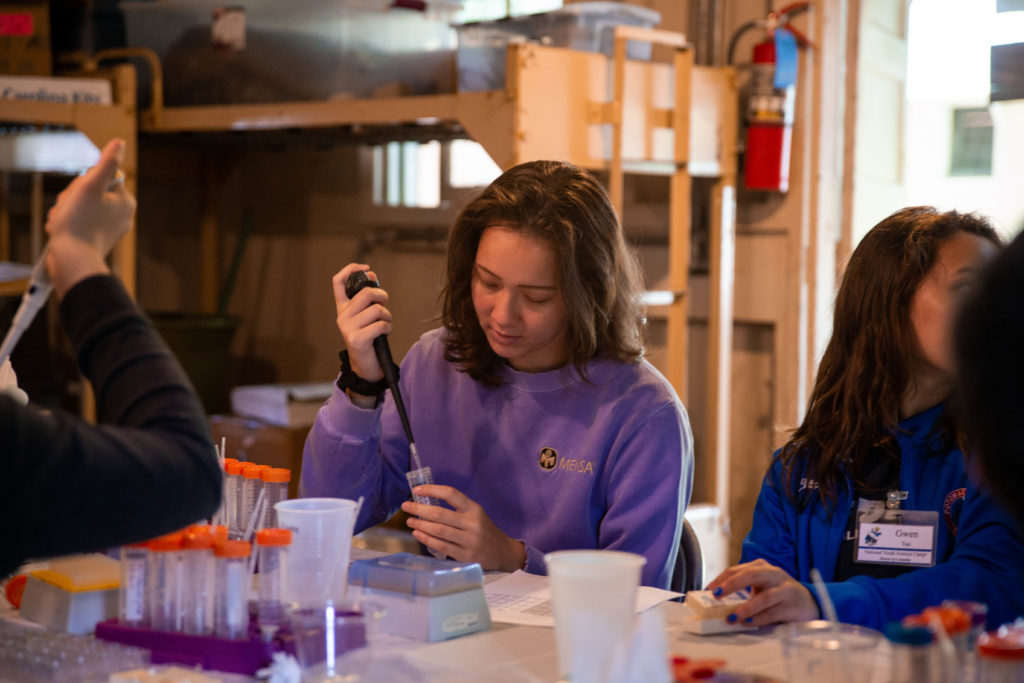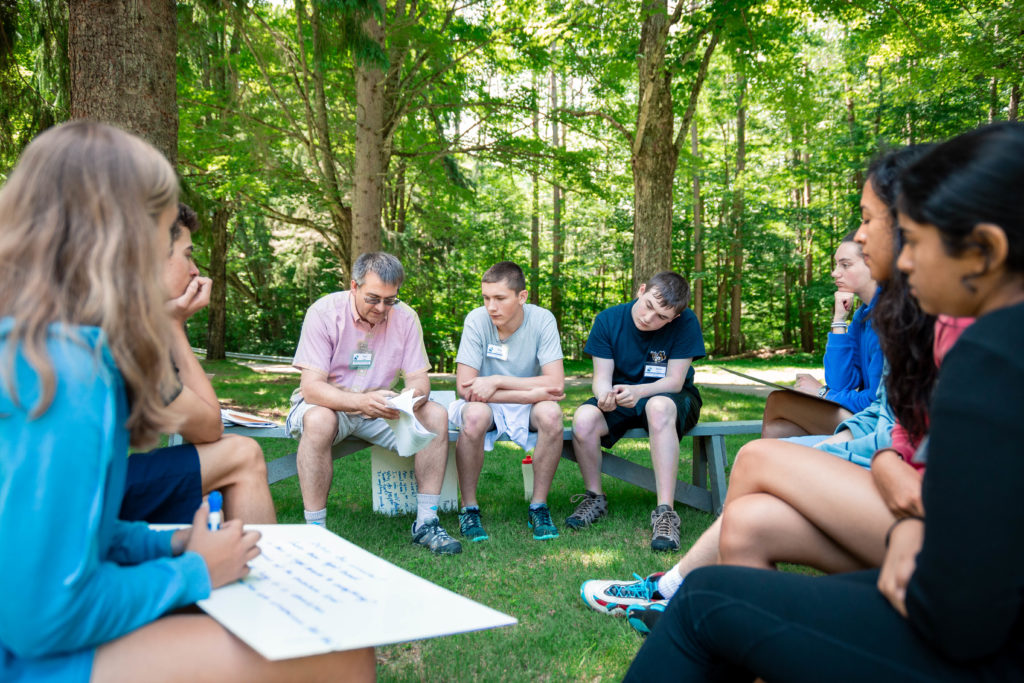The first full day of National Youth Science Camp 2018, and Olivia Gotte is already expanding the way she thinks about her plans.
Gotte, a delegate from Louisiana, enjoyed debate in high school, although she came to Camp Pocahontas with intentions to pursue biology and become a radiologist.
“I never thought being able to debate something would be important in science,” she said.
During a seminar focused on thought experiments, Gotte and other delegates discussed the value of a concealed piece of art by Michelangelo, buried below the proposed site for a hospital. Removing the art would detonate a bomb, but delegates noted technologic advances could save it someday. Delegates also discussed whether the art had intrinsic value.
Gotte saw more value in the hospital, but other delegates pointed out that art is not only aesthetically-pleasing, but also can have cultural and historical value.
She found herself thinking about other perspectives, and potential reactions as well, including whether building the hospital would anger investors or community members.
“There are so many different sides people don’t consider,” she said.
The group formed a circle on benches in the shade. Staph member Kyle Duff led the discussion. Nearby, other delegates laid in hammocks and on their backs underneath trees.
“Science is oftentimes viewed as black and white,” Gotte said. “It should be more gray.”
Philosophy and debate, Gotte said, “help scientists like us see the different sides to things.” For example, “is it worth it to take money from the government if the government is going to make us hide things?”
“Maybe we should consider what’s best for everyone instead of what’s best for our field and will get us more money,” she said.
Also during staph-led* seminars, delegates learned about using cameras, basic origami, and jazz improvisation on piano. Some went to a presentation entitled: “Kantan Nihongo wa sugoi desuyo! (simple Japaneses is awesome!)”
Friday morning, two delegates from West Virginia, Swagat Bhattacharyya and James Higgins, raised their state flag during the first ceremony of the year.
Directed studies also began today; some of those included:
- “Navigating the Fake World” by Dr. Paul Miller
- “The science of screen printing” by NYSCamp Performing Arts Staph*
- “Structural Biology in a Post-Genomic Era” by Dr. Pam Twigg
- “The Mathematics of Genetics” by Mr. Steve Blasberg
The night finished off with a lecture on gravitational waves and cosmic collisions by Dr. Maria Hamilton, who teaches physics at Marshall University in Huntington, West Virginia and does research on gravitational wave sources.
“I just love to see your bright eyes and interest,” she told the delegates.
Hamilton grew up in Romania. She pursued her degree in physics at the University of Iaşi, “in between classes in Communism and summers spent working in the collective farms,” according to her camp biography.
“Luckily, the revolution came before her senior year, and things lightened up a bit,” the biography continues. “In grad school, she started out in solid state physics before switching to general relativity. Her advisor handed her something pamphlet-sized to get her up to speed on the field. That didn’t do it, so she tried Kip Thorne’s 1,200-page book instead.”
Hamilton was only at camp long enough for the lecture and lots of delegate questions. She had to leave for an international trip.
But she said, following the lecture, that despite her busy schedule, she wanted to attend because she is grateful for the delegates’ rapt attention and enthusiasm.
“This is definitely the best audience,” she said.
A more extended photo gallery can be found here.
